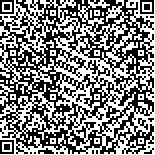| This article has been:Browse 1832Times Download 2522Times |

scan it! |
|
|
| DOI:10.13522/j.cnki.ggps.2020027 |
|
| The Efficacy of Microfiber Capillary Wicking Irrigation System for Improving Soil Water Distribution in Green Roofs |
|
WANG Zhiqiang, HUANG Siyu, PAN Changjiang, ZHANG Qingtao
|
|
1. School of Civil Engineering, Sun Yat-Sen University, Zhuhai 519082, China; 2. Guangdong University Key Laboratory of
Water Circulation and Water Safety in South China, Sun Yat-Sen University, Guangzhou 510275, China;
3. Guangdong Provincial Key Laboratory of Marine Civil Engineering, Zhuhai 519082, China;
4. School of Geography and Planning, Sun Yat-Sen University, Guangzhou 510275, China
|
| Abstract: |
| 【Objective】Green roof has been increasingly used in new buildings not only as a compensation to the lost habitat in urbanization but also as a strategy to mitigate urban flooding. One issue in green roof maintenance is irrigation, which is expensive and difficult to manage. This paper studied the efficacy of microfiber capillary wick as an irrigation system for green roofs. 【Method】Four plexiglass platforms were set up on a roof. From the top to the bottom, each consisted of a planting layer, a substrate layer, a water storage layer and a base layer to prevent exfiltration. Microfiber capillary wick (MCW) in different patterns - steering wheel (MCWI), spiral annular rings (MCWII) and straight capillary (MCWIII) - were placed in the plexiglass platforms for irrigation; irrigation without wick was taken as the control. In each platform, we measured the change in soil moisture content from 25 May to 30 August 2017. We also calculated the change in irrigation uniformity coefficient (UC) of each system. 【Result】Based on the mean SMC, the systems are ranked in the order: MCWII < MCWI < MCWIII. The average SMC in the three treatments was 46.7% higher than that in the control. Using MCW can keep the soil water content more than 5% during 97.8% of the experimental period, compared to 2/3 in the control. The Christiansen irrigation uniformity coefficient (CUC) of MCWI and MCWIII was approximately the same, while the CUC of MCWII at radius of 25 cm, 20 cm, 15 cm, 10 cm, and 5 cm was 1.6%,4.2%,4.8%,4.3% and 9.3% higher than that of MCWI, respectively. Daily irrigation variable coefficient (CV) of MCWI and MCW II was approximately 6%, while the CV of MCWIII was more than 10%. 【Conclusion】MCWII worked best by increasing SMC and relieving drought stress. The results presented in this work have wide implications for developing water-saving irrigation technologies for green roofs. |
| Key words: microfiber capillary wicking irrigation; soil moisture content; Christiansen uniformity coefficient; water supply uniformity; greening roof |
|
|